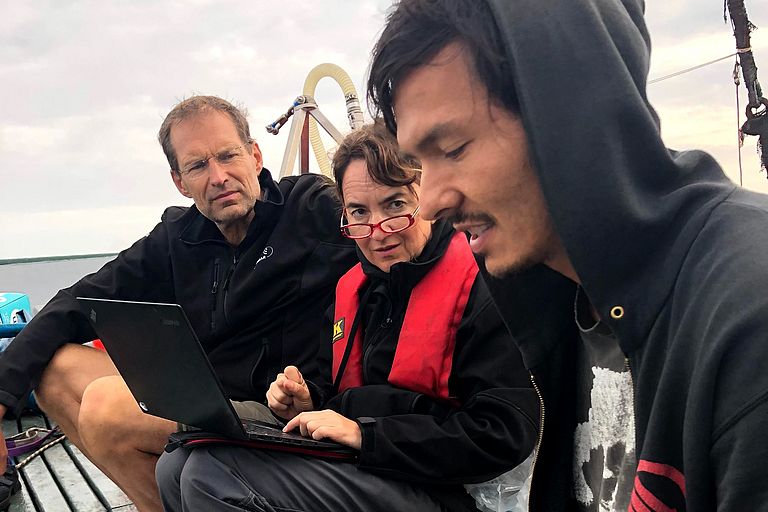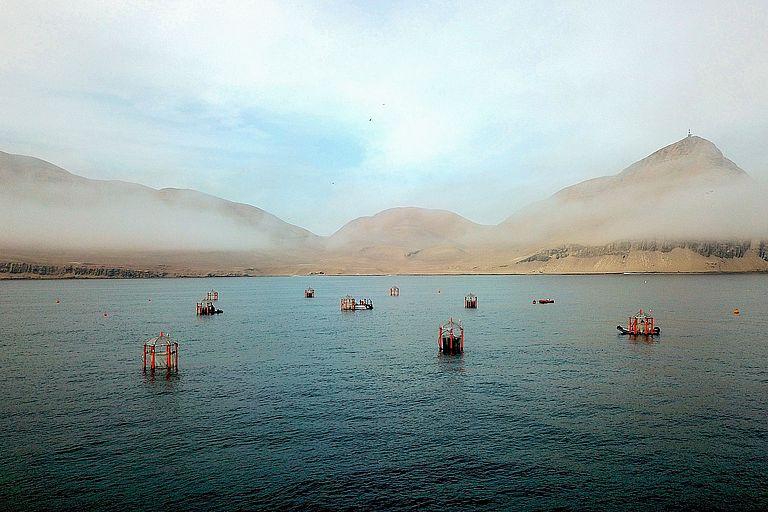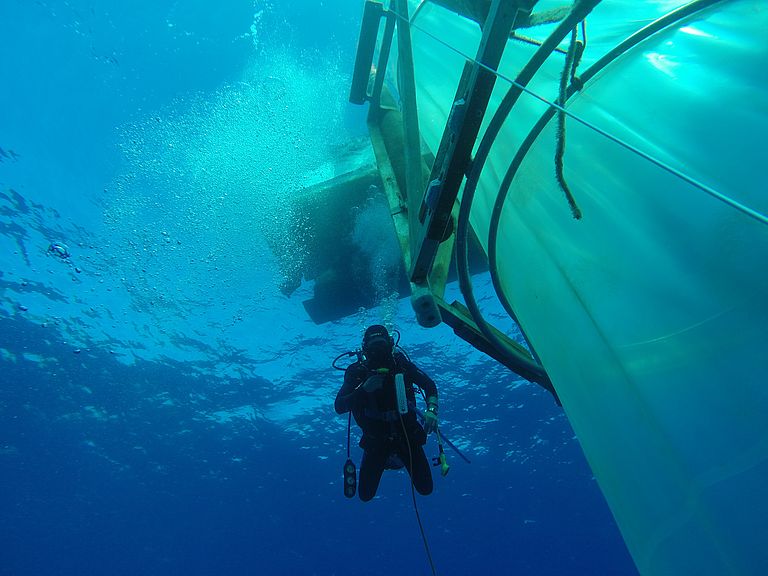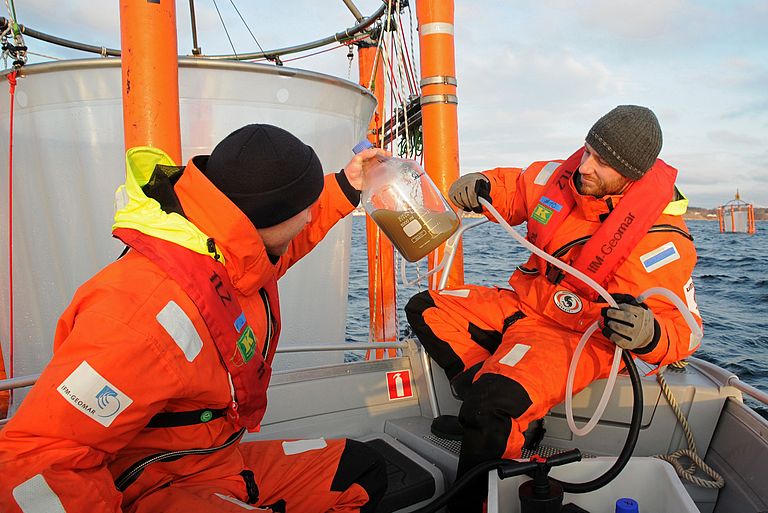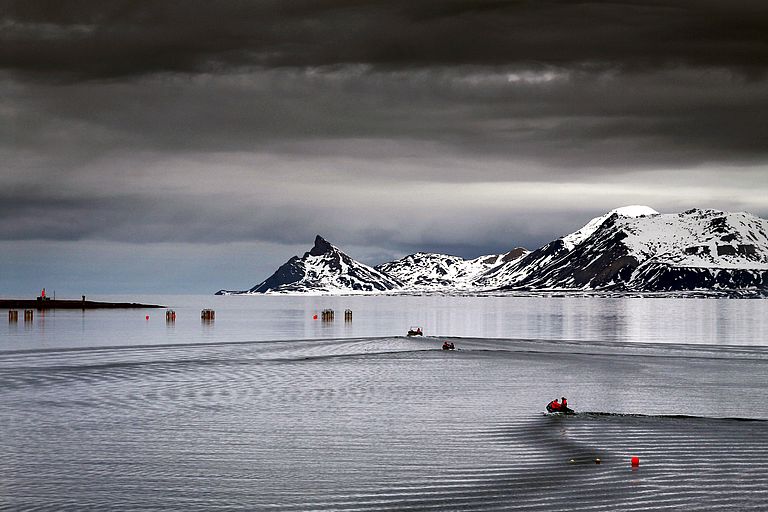The uncertain future of the oceans
Study analyzes the reaction of plankton communities to increased carbon dioxide
The ocean plays a key role in the current climate change, as it absorbs a considerable part of the atmospheric carbon dioxide emitted by mankind. On the one hand, this slows down the heating of the climate, and on the other hand, the dissolution of CO2 in seawater leads to acidification of the oceans. This has far-reaching consequences for many marine organisms and thus also for the oceanic carbon cycle. One of the most important mechanisms in this cycle, is called the biological carbon pump. Part of the biomass that phytoplankton forms in the surface ocean through photosynthesis sinks to the depths in the form of small carbonaceous particles. As a result, the carbon is stored for a long time in the deep sea. The ocean thus acts as a carbon sink in the climate system. How strongly this biological pump acts varies greatly from region to region and depends on the composition of species in the ecosystem.
The study, which has now been published in the journal Nature Climate Change, is one of the most comprehensive studies so far on the effects of ocean acidification on marine ecosystems. Scientists at the GEOMAR Helmholtz Centre for Ocean Research in Kiel have now been able to show for the first time that ocean acidification influences the carbon content of sinking organic material, and thus the biological pump. Surprisingly, the observed changes were highly variable. The carbon content of sinking particles increased or decreased significantly with increasing CO2, depending on the composition of species and the structure of the food web. Since the underlying data cover a wide range of ocean regions, this seems to be a global phenomenon. These findings allow a completely new assessment of the effects of ocean acidification.
Dr. Jan Taucher, marine biologist and main author of the study, says: "Interestingly, we found that bacterial and animal plankton, such as small crustaceans, play a key role in how the carbon cycle and biological pump respond to ocean acidification. Until now, it has been widely held that biogeochemical changes are mainly driven by reactions of phytoplankton. Therefore, even modern Earth system models do not take into account the interactions we observe between the marine food web and the carbon cycle. Our findings thus help to make climate models more realistic and improve climate projections".
Up to now, most of the knowledge on this topic has been based on idealized laboratory experiments, which only represent ecological interactions and the dynamics of the complex marine food web in a highly simplified way. This makes it difficult to transfer such results to real ocean conditions and project them into the future. In order to gain a more realistic insight, the study summarizes several field experiments that were conducted with large-volume test facilities, so-called mesocosms, in different ocean regions, from arctic to subtropical waters.
Mesocosms are, so to speak, oversized test tubes in the ocean, in which changes in environmental conditions in a closed but otherwise natural ecosystem can be studied. For the present study, a large amount of data from five mesocosm experiments was synthesized to provide a more precise picture of plankton communities and biogeochemical processes within the ecosystem. A total of over ten thousand data points were included in the analysis.
The newly gained knowledge can now be used to implement the complex ecological interactions in Earth system models, thus contributing to further improve climate projections.
Reference:
Taucher, J., T. Boxhammer, L.T. Bach, A. J. Paul, M. Schartau, P. Stange and U. Riebesell, 2020: Changing carbon-to-nitrogen ratios of organic-matter export under ocean acidification. Nat. Clim. Change, https://doi.org/10.1038/s41558-020-00915-5
